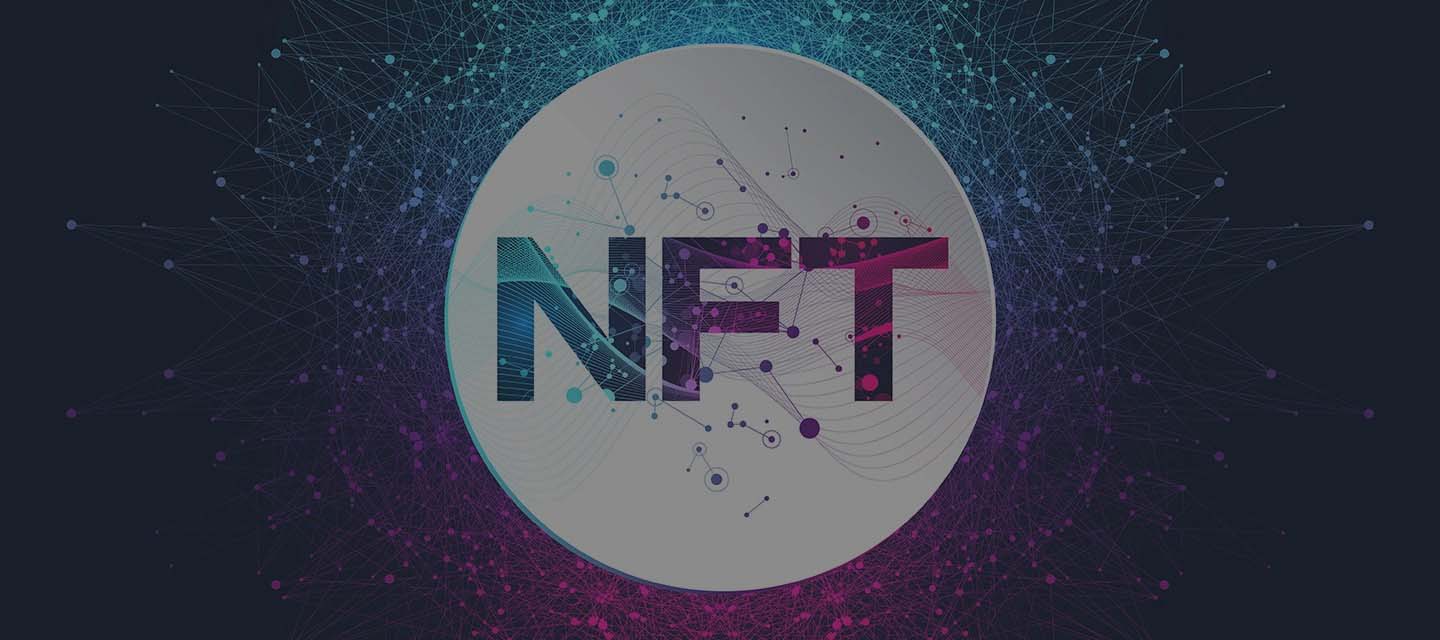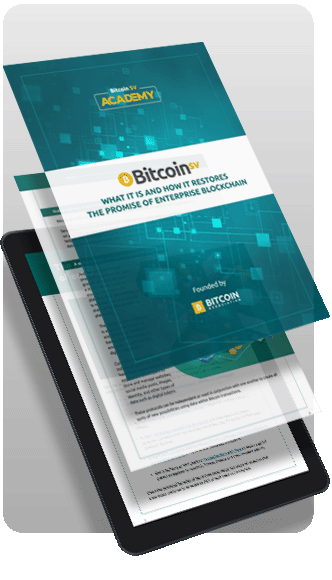Blockchain NFTs (Non Fungible Tokens) are a very hot topic in the digital asset world. And while the craze over NFT collectibles has certainly brought a lot of attention to the digital asset space, the value proposition of the technology is not all that clear.
And so, in this blog, we explore the definition and unique properties of NFTs, their value proposition, as well as some innovative business use cases.
Definition: What is a Non-Fungible Token (NFT)?
Fungibility is the property of a good or a commodity whose individual units are essentially interchangeable, where each unit is indistinguishable from any other unit. Tokens that are created with the same asset ID are considered fungible tokens. These tokens can be exchanged and carry the same value as any other token created in the same asset ID.
It is possible to create non-fungible tokens by creating tokens that have unique asset IDs. These tokens can represent unique qualities such as seat numbers or other details for things such as in-game collectables or other such items.
Source: Tokenized
The unique properties of NFTs
- NFTs are inherently indivisible, like an item of furniture that can’t be divided into smaller parts and retain its initial qualities. This makes them different from fungible assets, like a pound note, which can be subdivided into one hundred pence, each penny the same as the next.
- Like other blockchain tokens, an NFT is minted by an entity, after which it can be sold to a new entity who then becomes the owner of that token. Unlike fungible tokens, smart contract rules can be used to prevent or limit subsequent transfers of the token, based on a set of criteria.
- Although an NFT is minted with a specific set of properties (a state), these could be updated over time via smart contracts as certain conditions are met. Think of the ‘pass the parcel’ game, where a package loses one layer of wrapping each time the music stops, or the ‘head, torso, legs’ game, where a figure is completed with each participant drawing another section of the body.
The benefits and value propositions of NFTs for businesses and developers
- NFTs can be created on top of an existing blockchain via a token protocol. There’s no need to build your own blockchain or mint a new cryptocurrency.
- Verifiability of
- Ownership: the current owner
- Provenance: the item’s ownership record, all the way back to its minting authority
- Original and added properties: as the ‘state’ of an NFT can be updated by smart contracts, the initial and all subsequent changes of state will be recorded and verifiable
- Exclusivity: number of editions minted
- Dynamism: smart contracts can be implemented to alter the NFTs original state to utilise these tokens as in-game items that gain or lose properties, or artwork that develop over time.
- Enforcing the licensing of IP: marketing and selling of digital IP (Intellectual Property) is a pickle. One of the reasons is that digital music, images, documents and video are so easy to reproduce and distribute. This makes ownership of a digital item a hard sell, and fair remuneration of creators a long shot.
With NFTs, IP can be attributed to the rightful owner/creator, smart contracts can automate distribution of remuneration, and access can be limited to permissioned users by implementing DRM wrappers.
- Platform independent use: When IP is sold via a specific platform, the easiest way for the provider to ensure the user adheres to the licensing agreement is to lock the IP so it can only be used on the provider’s own software. Books purchased from Amazon Kindle, for example, can only (legitimately) be read on a Kindle device.
With NFTs, a service could license a book to readers by selling them a token that can be used on any platform and yet maintains the original licensing conditions e.g. non-transferable, non-commercial home use.
Current and potential NFT use cases
Omniscape - 3D NFTs linked to the real world
Omniscape platform is an XR Metaverse platform which aims to merge the real world and the digital world, and NFTs are a key to achieving this goal.
By using NFTs, Omniscape links tangible items to a virtual or digital twin to fuse the real world with AR and VR.
Eventually, every 3D object in Omniscape will be tokenised as an NFT on the BSV blockchain. Omniscape’s XR Metaverse will be made of billions of 3D NFTs that can be exchanged or redeemed for real-world physical assets, products, merchandise, coupons, special offers, vouchers, etc.
Omniscape’s upcoming NFT applications:
Later this year, Omniscape is planning to launch a virtual real estate platform that lets you buy locations in the same way you would buy domain names. This platform enables:
- The linking of any AR content or 3D/VR content with real locations
- 1:1 scale digital twins that will allow you to visit locations across the world as an avatar (a 3D NFT), and interact with people who are onsite via a hologram.
- IoT and sensor integration
- A crossover between AR and VR
- Earning revenue from paid content
If you download Omniscape’s mobile app (available on Google Play and the Apple App Store) you’ll be able to demo Metapets - unique, interactive, AI-driven, and customisable, 3D NFT pets that you can collect, feed, train, play with, and trade.
SLictionary - a community dictionary that lets you monetise your contributions
SLictionary.com has a unique way of creating value through non-fungible tokens (NFTs) through words and definitions.
SLictionary (from Structure Linguistics) is a self-learning dictionary that allows users to tokenise, trade and own the definitions of words. Similar to the game of Monopoly, definition owners can charge people to see their definition. Thanks to BSV’s micropayments, fees can be as low as 7/10ths of a penny. Although it would be affordable to access definitions, NFTs might generate thousands of pounds over time, making it a financial asset.
To secure your ownership of the definitions you created and secure the income it derives, SLictionary just released the STAS token. Each STAS token represents a unique definition that accumulates an income as SLictionary users access it. This gives it a cash flow, which means it can be valued and sold on.
NiftyCo’s Mona platform - monetising high-value artwork
A museum wishing to create NFTs to represent physical high-value artworks approached NiftyCo. For a start, they wanted to mint an NFT of a 17th century Dutch masterpiece and auction it off, but they had some concerns:
- The carbon footprint of blockchains like Ethereum
- The ability to include multiple documents in the NFT itself, like a certificate of authenticity, a multi-spectral image, etc.
- Privacy concerns, such as ensuring that nobody but the NFTs owner can access the files it contains to maintain its rarity and ability to licence the product to generate a revenue stream from it.
In response, NiftyCo is building Mona, a platform for NFT art that addresses the concerns by creating a portfolio NFT. A portfolio NFT consists of multiple encrypted documents that are wrapped in a DRM and stored on the BSV blockchain. The DRM wrapper limits access to the documents within to permissioned users, while BSV offers the most energy and cost efficient blockchain.
By creating a digital twin of high-value artwork, owners get access to an entirely new business model. Where their art is often stored under lock and key in a climate controlled basement, NFTs allow them a way to license it to generate an income without selling it.
TicketMint by SmartLedger
SmartLedger’s inhouse application, TicketMint is positioned to disrupt the smart ticketing industry by adding the ability to track, monitor and limit resale of tickets via an auditable public ledger.
By uniting ticketing and blockchain, the ticketing process is enriched with:
- Rights management
- NFT collectibles
- Data insights
- Secondary data markets
- Fraud mitigations
- Prevention of ticket gouging by third parties
Zenescope & FYX Gaming collab: NFTs for creating ‘platform crossover’ digital merchandise
NFTs offer significant value in the context of online gaming and sports, where they enable players of a virtual game to buy an ingame item, such as a pair of trainers, and redeem it for a real pair of trainers, or vice versa. Gamers could also purchase ingame items that are transferable to other games, and can be sold to other players - depending on the underlying smart contract rules.
Zenescope and FYX Gaming’s collaboration is an excellent example of licensing IP via NFTs to enable cross platform usage:
Zenescope Entertainment created a library of more than 300 graphic novel characters that they license out to partners, from film producers, writers and video creators. By minting their IP (characters) on the BSV blockchain, other platforms can use them in their games as players while upholding licensing conditions.
FYX Gaming’s CryptoFights is a strategy fighting game where players can create custom characters which are an NFT that they own. Characters can accumulate loot (armour, accessories), create illusions and win battles - with all of these attributes added to the NFT, making it transferable to other games.
Soon, FYX Gaming will bring some of Zenescope’s characters (limited edition NFT collectibles) into its CryptoFights blockchain-based video game. The partnership benefits both CryptoFights and Zenescope, as it will improve the user experience and cross-market their platforms to each other’s audiences.
Dive into developing on the BSV blockchain
Have these projects enticed you to try your hand at creating an NFT?
Whether you’re a non-blockchain developer, an Ethereum developer or a generalist blockchain developer, learning to build Bitcoin applications can be a steep learning curve.
But it doesn’t have to be.
The BSV Academy offers a certified Introduction to Bitcoin development course that will help you gain the formative skills and grasp the crucial concepts needed to build applications with Bitcoin successfully.
Chapter 7 of this course covers smart contracts and token protocols, including electronic contracting, the Tokenized protocol, Run platform and sCrypt smart contracts and tokens.
As a bonus, we offer our introductory course free of charge! To register, simply click over here.


